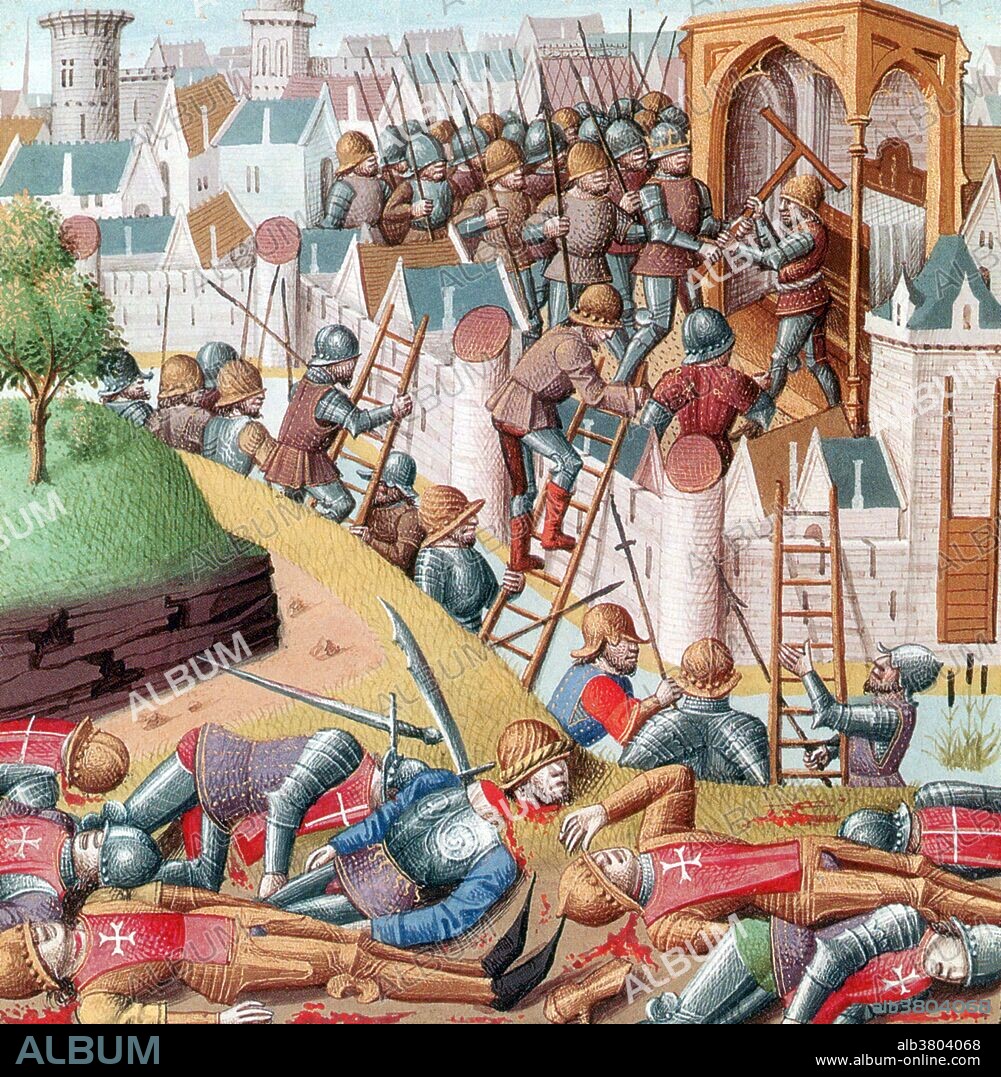alb3804068
Third Crusade, Loss of the True Cross, 1187

|
Add to another lightbox |
|
Add to another lightbox |



Buy this image.
Select the use:

Title:
Third Crusade, Loss of the True Cross, 1187
Caption:
Entitled: "The loss of the true cross." The Third Crusade (1189-92) was an attempt by European leaders to reconquer the Holy Land from Saladin. The campaign was largely successful, capturing the important cities of Acre and Jaffa, and reversing most of Saladin's conquests, but it failed to capture Jerusalem, the emotional and spiritual motivation of the Crusade. On September 2, 1192, King Richard I and Saladin finalized a treaty granting Muslim control over Jerusalem but allowing unarmed Christian pilgrims and merchants to visit the city. The successes of the Third Crusade allowed the Crusaders to maintain considerable crusader states in Cyprus and on the Syrian coast. However, the failure to recapture the ultimate prize, Jerusalem, would lead to the Fourth Crusade. The artist who drew this medieval illumination appears to have merged two events: The Battle of the Horns of Hattin, when the cross was taken by Muslims and the Christian siege of Acre, after which it was hoped that Saladin would return the cross. The Battle of Hattin took place on July 3 and 4, 1187, between the Crusader Kingdom of Jerusalem and the forces of Saladin. The Siege of Acre was one of the first confrontations of the Third Crusade, lasting from August 28, 1189 until July 12, 1191, and the first time in history that the King of Jerusalem was compelled to personally see to the defense of the Holy Land.
Category:
ILLUSTRATION • History: Middle Ages
Credit:
Album / NYPL/Science Source
Releases:
Image size:
3667 x 3750 px | 39.3 MB
Print size:
31.0 x 31.8 cm | 12.2 x 12.5 in (300 dpi)
Keywords:
1180S • 1190S • 12TH CENTURY • 3RD CRUSADE • ARMES • ARMS • ART • ARTWORK • BATTLE OF HATTIN • BATTLE OF THE HORNS OF HATTIN • BATTLE • CAVALRY • CELEBRITIES • CELEBRITY • CHEVALIER • CHIVALROUS • CHIVALRY • CHRISTIAN WARRIOR ARMY • CODE OF CONDUCT • CRUSADE • CRUSADER • CRUSADERS • DAYS OF CHIVALRY • DRAWING • EVENT • EVENTS • FAMOUS PEOPLE • FAMOUS • GENTLEMAN • GENTLEMEN • GUERRA • HISTORIC • HISTORICAL • HISTORY • HISTORY: MIDDLE AGES • HOLY WAR • HORSEMAN • HUNDRED YEARS WAR • IDEAL OF CHIVALRY • ILLUMINATED MANUSCRIPT • ILLUSTRATION • ILLUSTRATIONS • IMPORTANT • KING'S CRUSADE • KINGS CRUSADE • KNIGHT • KNIGHTHOOD • KNIGHTS • LOSS OF THE TRUE CROSS • MANUSCRIPT • MANUSCRIPT, ILLUMINATED • MEDIEVAL • MIDDLE AGES • NOTABLE • RELIGIOUS WAR • RIDER • ROMAN CATHOLIC CHURCH • SIEGE OF ACRE • THIRD CRUSADE • WAR • WARFARE • WARS • WEAPON • WEAPONRY • WEAPONS • WELL-KNOWN
 Pinterest
Pinterest Twitter
Twitter Facebook
Facebook Copy link
Copy link Email
Email
